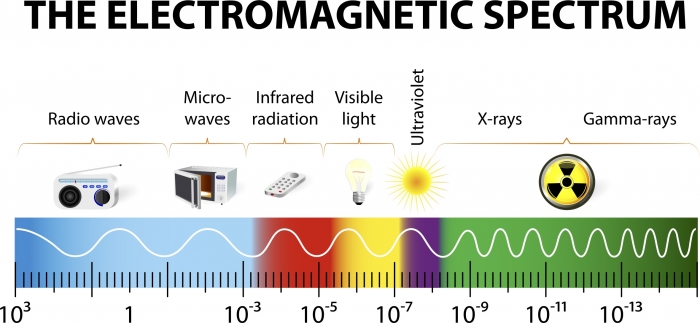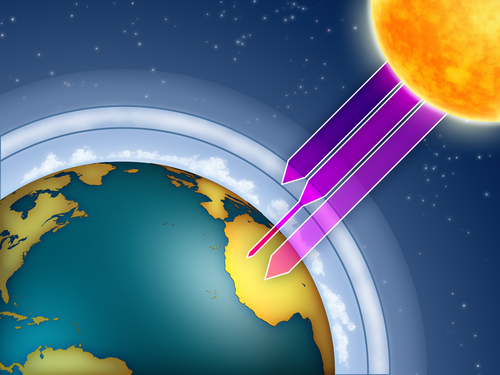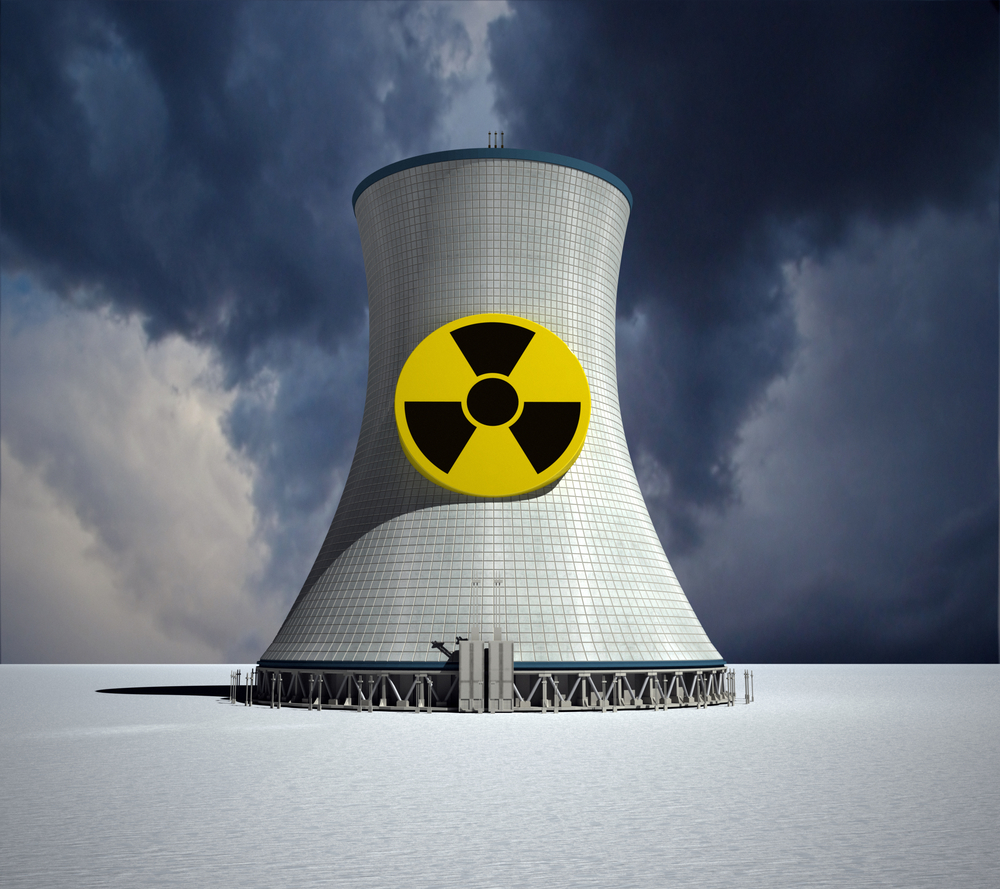In this activity, you will learn about three different waves from the electromagnetic spectrum, including their properties, uses, and dangers.
What is the electromagnetic spectrum?
The chart below illustrates the electromagnetic spectrum. It is a group of transverse waves that all travel at the speed of light.
The numbers at the bottom of the chart represent the wavelengths of these waves in metres. As you can see, the wavelengths decrease as we move through the spectrum, from radio waves through to gamma rays. The frequency of each wave therefore increases, and the amount of energy they transfer also increases. For example, gamma rays have the smallest wavelength, the highest frequency, and transfer the most amount of energy of all the waves in the electromagnetic spectrum.

Notice that visible light is in the centre of the spectrum. Of all the waves in the spectrum, this is the only type of wave that can be seen. All the other waves (radio, microwave, infrared, ultraviolet, x-ray, and gamma) are invisible to humans.
Let's focus on the three types of wave in the electromagnetic spectrum with the highest frequencies, starting with ultraviolet.
Ultraviolet

Ultraviolet (often shortened to UV) is the reason that skin gets tanned in the sunshine. The Sun emits visible light and heat, but it also releases UV radiation, and these waves pass through our atmosphere. When UV waves are absorbed by somebody's skin, it causes a pigment called melanin to be released, which darkens it.
Sunbeds emit UV radiation to expose someone to 'artifical' sunlight, which will have the same effect on their skin as spending time in the sunshine.

UV rays are also used for security purposes. For example, bank notes and passports have hidden patterns on them, which are only visible when UV light is shone onto them. They are produced in this way to make it much harder to forge a copy, and it allows us to know whether a bank note or passport is real or a fake.
One final use of UV radiation is to kill bacteria in water. The radiation has enough energy to change the structure of bacteria cells, thereby making them unable to reproduce or cause infection.
X-rays
You will have heard of x-rays. They are the waves that are used to make pictures of bones.

They create such a clear image because your bones absorb x-rays, while your soft tissue (e.g. skin and muscle) allow x-rays to pass through. An x-ray scan works by the patient standing in between the source of x-rays and a photographic screen. When a beam of x-rays is fired at the patient's body, it is only the waves that have passed through their soft tissue that reach the screen and turn it black. Meanwhile, the bones, by absorbing the waves, prevent them from reaching the screen, and those parts of the image remain white.

X-rays have uses other than medical imaging. For example, they are also used in airport security, as they use the same process to make images of the insides of suitcases. This is why you should never put electronic devices through the security scans in an airport. The x-rays are so powerful that they could cause damage to the device. So, always remember to put your phone into a separate tray!
Gamma rays

Finally, we come to gamma rays. These have the highest frequency of all the waves in the electromagnetic spectrum, and therefore they transfer the most energy. For this reason, they are more dangerous than any type of radiation in this group of waves. Gamma rays are released in nuclear reactions, so anyone who works in a nuclear power plant would need to be extremely careful to avoid coming into contact with this radiation.
In medical uses, gamma rays are used to kill bacteria, which allows surgeons to sterilise equipment such as scalpels. This makes it safe to operate on a patient, as there is no risk of infection. Gamma rays have another crucial use, which is to treat cancer. These waves are so powerful that they can damage or even destroy cancer cells.
As these waves have such high energies, there are very strict safety precautions which need to be followed by anyone who may come into contact with them.
Ionising radiation
UV, x-rays, and gamma waves are the only waves in the electromagnetic spectrum that are ionising. This means that they have enough energy to remove electrons from atoms. This doesn't sound too hazardous, but if living tissue becomes ionised, then it can damage the DNA inside the cells and cause mutations.
To avoid these dangers, anyone who works with ionising radiation (e.g. engineers in nuclear power stations or radiologists in hospitals) must take precautions to minimise the risk. Suitable steps are to wear protective clothing (such as lead aprons) or stand behind screens to absorb the waves, to stand as far away as possible from the source, and to keep their time in contact with the waves as low as possible.
Let's have a go at some questions now.








